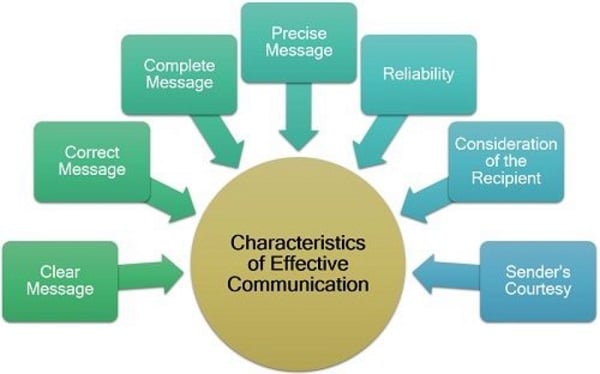Hybrid work models have gained increasing popularity over time, especially amidst the challenging times of COVID-19. While the idea of working remotely may be favorable for some, others may differ in opinion and like the idea of going to work in person.
The hybrid work model strikes the perfect balance, and some may argue that it gives them the best of both worlds at home and work. However, maximum productivity is one of the main goals of any business. That means understanding hybrid work productivity metrics is key to assessing productivity levels.
But before we get into the complexities of that, you need to understand what the hybrid work model entails in the first place.
Hybrid team: What Is It & How Does It Work?
Simply put, a hybrid team is a flexible work arrangement where some employees come into the office, whilst others work remotely or come in on specified days. The hybrid work model also allows employees to choose if they’d like to come into work or carry out their job roles from home.
A hybrid team is also a win-win for employees and business owners both, as working flexibly encourages employees to have higher motivation and productivity levels at work.
Past research has found that around 60 percent of employees tended to be more productive and focused at workplaces that had hybrid teams, as compared to ones with strictly homogenous (fully office-based or remote) teams.
As mentioned earlier, hybrid work offers employees the best of both worlds. The following image demonstrates the popularity of hybrid work:
Source: Microsoft
Now since we’ve discussed what hybrid teams are, and what the hybrid work model is about in general, the next question is: How is productivity measured? To measure hybrid work productivity correctly, you need to track its relevant productivity metrics. Moreover, your company’s key performance indicators cannot be ignored in the process, as they’re the best way to know how well you’re performing and whether you’re meeting all your business objectives.
Below we will discuss this further.
Setting KPIs To Assess Team & Company Success
To be on the top of your game, you need to set KPIs for hybrid teams. They will also help you monitor their progress. However, make sure they are realistic and easily measurable. In this section, we will mention some important KPIs business owners should set to adequately assess team and company success:
1. Communication
An efficient hybrid working environment is one where there is consistent and seamless communication between team members. Thanks to the fast-paced, digitized world we live in today, there are plenty of options available for corporate communication. From online chat apps, video conferencing tools, project management dashboards, the choices are truly endless.
While sites like systeme.io can help you scale other parts of your business like email marketing, marketing, and website, you will need to set internal communication processes to ensure that your team is never more than a click away from each other.
In fact, one can even find information on how to write a suitable follow-up email for clients.
The following image can help you understand the overall characteristics of effective communication:
Source: The Investors Book
But what’s the best key performance metric business leaders need to set to evaluate communication? The answer to this would be team members’ response time. An easy way to go about this would be to calculate the average time your hybrid team takes in communicating externally and internally daily, and then work on reducing that eventually. It will most likely be a slow, yet steady process.
2. Self-Discipline
Let’s be honest. You can’t “baby” your workers into performing well. Not only should they be able to take charge of their duties, but they must also be aware of any gaps they need to fill to perform well (or better). For instance, look at your design team. Consider they are working on a logo design. The team will need to work together and stick to a schedule to deliver on time. The motivation to do well must come from within the team.
Moreover, as there will naturally be remote workers in a hybrid working environment, it is almost impossible for managers to constantly keep a check on employees to ensure they’re fulfilling their respective responsibilities.
Similarly, managers may not be able to keep track of staff appointments as some workers are not in the office. One way to tackle this is to equip your team with online scheduling tools that can help manage your staff appointments and ensure that you are connected to your team.
Each employee’s self-discipline plays a pivotal role in the overall discipline of your business and should hence, be measured. A helpful way to measure self-discipline would be to ask questions that revolve around your employees’ meeting deadlines without reminders, how many projects they can get done on an individual basis without supervision, and so on.
3. Technology Adherence
Research has found that around 72 percent of business executives were keen on purchasing tools for maximum efficiency of their remote work teams. That means that to be an active part of a hybrid work team, employees need to be “tech-savvy”, especially to improve remote team collaboration.
For instance, if you invest in a time tracking tool to monitor employees coming in or leaving work on time, but employees don’t clock in, it’ll defeat the purpose of your purchase.
If you’re investing in technological assets to assess team and company success, you must ensure that 100 percent of your workforce uses them responsibly.
4. Learning
To make the most of modern technological advancements, your employees need to educate themselves about them fully. Not only will this help them gain knowledge regarding certain technologies used in the workplace, but they’ll also be able to use them more efficiently.
As a hybrid working team, you must shift your focus to e-learning. Virtual learning programs, for example, can be the best way to teach your employees about technological advancements at your workplace. They also have various other benefits.
Consider the following data:
Source: intuto
Some important KPIs to take into consideration when assessing the success of e-learning programs include employee attendance and employee completion of the respective virtual learning program.
5. Bottom-Line Results
One of the most effective ways of measuring your team’s performance is to significantly increase your company’s bottom-line results.
For instance, if you’re seeking to measure performance, but fail to measure the revenue generated per employee, then you won’t be able to evaluate it. You may also need to reduce unnecessary expenses if you’re not reaching your goal revenue.
Furthermore, it may be challenging to measure revenue generated by employees that is not directly linked to sales. In this case, you could try to assess them by tracking their productive hours at work, their customer base, or how coherent they are in completing company projects.
Conclusion
As times are changing and the corporate world is becoming more technology-focused and changing the way it operates on external and internal levels, it remains pivotal now more than ever for businesses to keep up to stay relevant. Not doing so can limit the potential of their company.
Moreover, due to the globally challenging times of COVID-19, workspaces have begun to adopt “new normals”. Hybrid work models have become immensely popular as a result.
Business owners must master how to track hybrid work productivity metrics to ensure their business reaches great heights. Do your research, know your KPIs, and be willing to let go of outdated work models to see your company reap its fruits in the long run.









Interesting post! I think it is great that you are focusing on the hybrid work model and how COVID-19 has caused many people to change over. It seems like a really popular way of working for some time now, and it’s good to see others recognizing its benefits. Great insights in this blog post; thanks for sharing them!